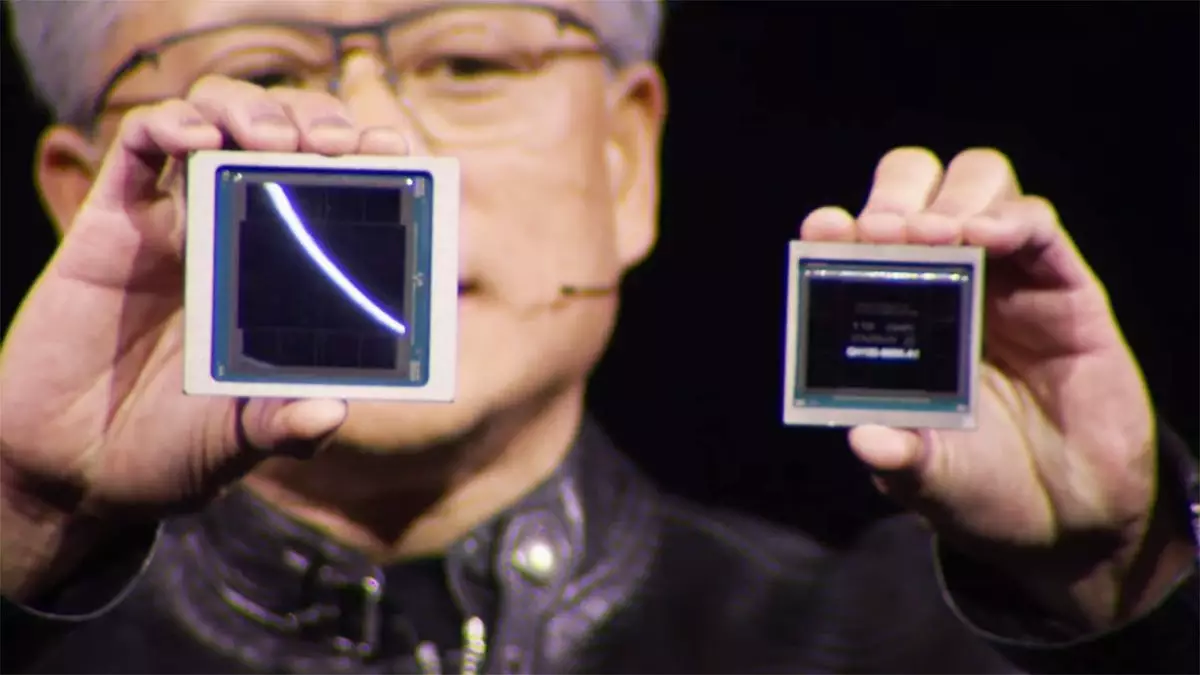Nvidia has long been a dominant force in the chip market, and their recent foray into Blackwell chips represents a significant advancement in technology aimed at data centers, particularly utilized by major companies like Microsoft Azure. However, the rollout of these chips has not come without complications. Originally scheduled for an earlier release, the arrival of the Blackwell chips has sparked discussions that delve deep into the intricacies of technology production, reliability, and partnerships in the semiconductor industry.
Initial reports indicated that Nvidia’s Blackwell chips might have been launched earlier than optimal. As the timeline shifted, subsequent testing unveiled critical failures within the chips when subjected to the high-voltage conditions that are ubiquitous in data centers. According to confidential sources cited in The Information, these defects may have arisen from a hurried production process. The implications of rushing chips to market can be particularly detrimental, causing significant operational disruptions for firms relying on these technologies to maintain efficiency.
The dilemma poses a broader question: In the tech industry, is speed of delivery more critical than the assurance of quality? When companies opt for rapid deployment to seize market opportunities, they risk compromising the integrity of their products, ultimately affecting their reputation.
Tensions are palpable between Nvidia and TSMC, the Taiwanese semiconductor manufacturer responsible for producing Blackwell chips. Each party appears to be casting blame; while Nvidia holds TSMC responsible for purported deficiencies in packaging technology, TSMC argues that Nvidia’s haste left insufficient margin for quality assurance. This conflict is indicative of a more extensive, three-decade-long partnership that, although historically successful, has seen its share of interruptions and complications.
For context, Nvidia’s previous collaboration with Samsung during the production of their popular Ampere GPUs did not yield the results the company had hoped for due to skyrocketing prices and shortages. These past experiences reinforce Nvidia’s cautious narrative surrounding partnerships in the semiconductor space.
Amid the tensions with TSMC, emerging rumors suggest that Nvidia is contemplating a renewed partnership with Samsung, hoping to capitalize on lower production costs. The hypothetical 20-30% discount that Nvidia seeks raises eyebrows—not least due to the historical complications of working with Samsung. The semiconductor landscape is volatile; as Nvidia navigates through these partnerships, the pressure mounts to secure reliable and cost-effective manufacturing without compromising quality.
Despite sharing a portion of the market, Samsung has experienced its own tribulations, evidenced by plummeting stock prices and foreign investors offloading shares. Still, the company remains one of the industry giants, vying for expansion and innovation amidst challenges. This context highlights the complexity of choosing a manufacturing partner in a competitive market.
Despite the rocky relationship between Nvidia and TSMC, one fact remains clear: TSMC stands out as the industry leader, exhibiting a remarkable 39% increase in sales compared to last year’s third quarter. Their advanced manufacturing processes and exclusive focus on third-party production forge a solid case for Nvidia to maintain its partnership—a logical decision, given that TSMC’s capabilities are unmatched in the current market.
The ongoing disputes may suggest Nvidia’s yearning for more favorable financial arrangements rather than a complete departure from TSMC. As the company gears up for the launch of its next-generation RTX 50-series graphics cards, it is imperative that these disruptions be resolved efficiently to avoid potential setbacks.
Nvidia’s challenges with the Blackwell chips underscore the critical balance between speed and reliability in technology production. As tensions with TSMC mount amidst speculation of revisiting Samsung as a partner, all eyes will be on how Nvidia navigates these turbulent waters. The tech industry remains in a state of flux, where quality assurance is paramount. As companies strive to innovate, they must also learn from past missteps and seek sustainable solutions that prioritize long-term reliability over short-term gains. The coming months will be pivotal for Nvidia as it attempts to correct course and deliver products that meet the high expectations of both the market and its customers.

